Results 11,131 to 11,140 of 12091
Thread: Anandtech News
-
05-18-21, 05:14 PM #11131
Anandtech: NVIDIA To Extend Ethereum Throttle to GeForce RTX 3080, 3070, & 3060 Ti “L
Continuing their ongoing efforts to limit the Ethereum mining performance of their GeForce video cards – and thus make them less enticing for miners – NVIDIA today has announced that they are bringing their cryptocurrency hash limiter to additional GeForce cards. Already a fixture on the vanilla GeForce RTX 3060 since its launch, NVIDIA has begun incorporating their hash limiting technology and its associated security stack into newly manufacture red GeForce RTX 3080, 3070, and 3060 Ti cards. The new cards will appear on shelves later this month, and will carry the “LHR” branding to differentiate themselves from the first-generation, unthrottled cards.
More...
-
05-19-21, 11:07 AM #11132
Anandtech: Ampere Roadmap Update: Switching to In-House CPU Designs, 128+ 5nm Cores i
Today we’re seeing an Ampere roadmap update: Beyond 128-core Altra Max perf reiterations, and announcing a Microsoft cloud win, the company discloses they’re switching from Neoverse to a new in-house full custom CPU microarchitecture starting in 2022.
More...
-
05-20-21, 01:23 PM #11133
Anandtech: ASRock Rack B550D4-4L Motherboard Review: B550 Goes Professional with BMC
Over the last year, we've seen several B550 models, with the vast majority of these catering to desktop users and gamers looking for a cost-efficient option to use with AMD's Ryzen processors. Back in January, we reported that ASRock Rack had readied up a new B550 model with a more professional flavor, the B550D4-4L. The B550D4-4L features support with a broad range of AMD Ryzen processors, including 5000, 4000G, and 4000 Pro, with support for most 3000 series processors. Some of the board's core features include Gigabit Ethernet, support for 128 GB of DDR4 memory, and an ASPEED BMC controller for management over a network. We get to grips with the ASRock Rack B550D4-4L and see how it compares to other AM4 models in our latest motherboard review. It came with a few surprises as well.
More...
-
05-24-21, 10:12 AM #11134
Anandtech: Qualcomm Announces Snapdragon 7c Gen 2: Entry-Level PC and Chromebook Refr
As part of their Scaling the Mobile Compute Ecosystem presentation, Qualcomm this morning is announcing a refreshed version of their Snapdragon 7c for laptops. Aptly named Snapdragon 7c Gen 2, the updated chip for entry-level Windows PCs and Chromebooks sports a slight clockspeed boost, bumping the frequency of the two Kryo 486 (Cortex-A76) cores up to 2.55GHz. Spec bumps aside, Qualcomm’s target market for the 7c family hasn’t changed, with the updated SoC designed to serve as an anchor for sub-$400 “always-on” devices.
More...
-
05-24-21, 10:12 AM #11135
Anandtech: Qualcomm Shows Off Snapdragon Dev Kit for Windows on Arm Development
Alongside today’s Snapdragon 7c Gen 2 SoC announcement, Qualcomm is also unveiling a new Windows 10-focused development kit. Collaborating with Microsoft, the two companies have put together the Snapdragon Developer Kit for Windows 10, which true to its name, is designed to serve as a dev kit for application authors to more easily test Windows 10 on Arm programs. The pint-sized PC is expected to be available this summer.
Overall, while devices based on Qualcomm’s Windows-capable Snapdragon SoCs have been around for a couple of years now, neither Qualcomm nor Microsoft have put together an official development kit for the platform. And though the idea of a development kit is somewhat foreign in the PC landscape where there is no one PC platform (x86 or otherwise), Qualcomm’s Windows on Arm (WoA) efforts hail from the mobile world, where dev kits and reference devices are common. So in an effort to better meet the needs of WoA application developers, whom until now have been stuck doing testing on laptops and tablets like the Surface X Pro, Qualcomm and Microsoft are putting together a proper mini-PC for developer testing.
At this point, Qualcomm isn’t saying too much about the PC itself, in part to give Microsoft something to announce as part of their Build conference later this week. However, given the timing of the announcement – as well as Qualcomm’s own comments on ensuring the dev kit remains affordable – it wouldn’t be too surprising to see the kit based around the new Snapdragon 7c Gen 2 SoC. Though the slowest of Qualcomm’s offerings, the 7c Gen 2 is also the cheapest option, and more than sufficient for basic compatibility testing.
Meanwhile a side-shot of the PC at least gives us a basic idea of what to expect for I/O. The right side of the box ha a single USB port, along with a SD card slot and a third, unknown card slot (SIM?).
The Snapdragon Developer Kit will go on sale this summer, with Microsoft selling the dev kit directly through their online store.
More...
-
05-25-21, 08:53 AM #11136
Anandtech: Arm Announces Mobile Armv9 CPU Microarchitectures: Cortex-X2, Cortex-A710
Today Arm is announcing a whole cluster of Armv9 client CPUs: The Cortex-X2: A flagship core with more performance and deeper OOO, the Cortex-A710: a power-efficient performance core, and the Cortex-A510: the new much-awaited little core with a twist. All housed in a new redesigned DSU-110 L3.
More...
-
05-25-21, 09:42 AM #11137
Anandtech: Arm Announces New Mali-G710, G610, G510 & G310 Mobile GPU Families
Today alongside the CPU announcements, Arm is also unveiling a whole family of third generation Valhall GPUs with the Mali-G710, G510, G310, with particularly large improvements in the mid- and low-end.
More...
-
05-25-21, 04:35 PM #11138
Anandtech: PCI Express 6.0 Status Update: Draft 0.71 Coming Soon, Final Release by En
As part of their yearly developer conference, the PCI Special Interest Group (PCI-SIG) also held their annual press briefing today, offering an update on the state of the organization and its standards. The star of the show, of course, was PCI Express 6.0, the upcoming update to the bus standard that will once again double its data transfer rate. PCI-SIG has been working on PCIe 6.0 for a couple of years now, and in a brief update, confirmed that the group remains on track to release the final version of the specification by the end of this year.
The most recent draft version of the specification, 0.7, was released back in November. Since then, PCI-SIG has remained at work collecting feedback from its members, and is gearing up to release another draft update next month. That draft will incorporate the all of the new protocol and electrical updates that have been approved for the spec since 0.7.
In a bit of a departure from the usual workflow for the group, however, this upcoming draft will be 0.71, meaning that PCIe 6.0 will be remaining at draft 0.7x status for a little while longer. The substance of this decision being that the group is essentially going to hold for another round of review and testing before finally clearing the spec to move on to the next major draft. Overall, the group’s rules call for a 30-day review period for the 0.71 draft, after which the group will be able to release the final draft 0.9 specification.
Ultimately, all of this is to say that PCIe 6.0 remains on track for its previously-scheduled 2021 release. After draft 0.9 lands, there will be a further two-month review for any final issues (primarily legal), and, assuming the standard clears that check, PCI-SIG will be able to issue the final, 1.0 version of the PCIe 6.0 specification.
In the interim, the 0.9 specification is likely to be the most interesting from a technical perspective. Once the updated electrical and protocol specs are approved, the group will be able to give some clearer guidance on the signal integrity requirements for PCIe 6.0. All told we’re not expecting much different from 5.0 (in other words, only a slot or two on most consumer motherboards), but as each successive generation ratchets up the signaling rate, the signal integrity requirements have tightened.
Overall, the unabashedly nerdy standards group is excited about the 6.0 standard, comparing it in significance to the big jump from PCIe 2.0 to PCIe 3.0. Besides proving that they’re once again able to double the bandwidth of the ubiquitous bus, it will mean that they’ve been able to keep to their goal of a three-year cadence. Meanwhile, as the PCIe 6.0 specification reaches competition, we should finally begin seeing the first PCIe 5.0 devices show up in the enterprise market.
Gallery: PCI Express 6.0 Status Update: Draft 0.71 Coming Soon, Final Release by End of Year


More...
-
05-26-21, 11:32 AM #11139
Anandtech: Western Digital Unveils Multimedia-Focused SanDisk Professional Portfolio
Western Digital's G-Technology brand is well-known in multimedia production circles with products ranging from portable SSDs to multi-HDD RAID enclosures. As part of its Flash Perspective event today, the company is introducing the SanDisk Professional tag for products sold earlier under the G-Technology brand. In addition to new products targeting the prosumers and production houses, existing products are also getting speed bumps with updates in the USB interface.
With increased resolutions and frame rates, content capture on location (as well as post-processing) now deals with huge amounts of data. On the capture side, we have seen multimedia-recording equipment support new card formats such as SD Express, CFast, and CFexpress. These allow capture at speeds exceeding even SATA SSDs, with CFexpress being the current card of choice for professional capture equipment. SanDisk has traditionally played in the consumer market with various memory cards. On the CFexpress side, they have been offering the Extreme PRO lineup - however, the other products in the Extreme PRO category are often meant for the consumer base too. With SanDisk Professional, the company has introduced the PRO-CINEMA CFexpress VPG400 (with a guaranteed 400MBps write speed) for multimedia production houses with the 256GB version carrying a MSRP of $450.
Card readers that integrate into optional card docks are quite popular in the industry, allowing for simultaneous ingestion of content from multiple capture devices. One of the first products in this segment was the Thunderbolt 2-equipped Lexar Professional Workflow HR2, which we reviewed back in 2017. Though Lexar dropped the ball in terms of keeping up with the latest technology, vendors such as ATech Flash Technologies carry products such as the Blackjet TX-4DS. Equipped with a Thunderbolt 3 upstream interface, the TX-4DS supports up to 4 different swappable modules to support a range of physical media (CFast / CFexpress / XQD / Sony SxS / RED MINI-MAG / SDXC / 2.5" SATA / M.2 PCIe etc.). Western Digital has also decided to play in this market - the SanDisk Professional PRO-READER series comes with a USB 3.2 Gen 2 Type-C interface (up to 10 Gbps) and supports different types of cards including CFast ($90), CFexpress ($100), RED MINI-MAG ($200), and CF / SD / microSD ($80).
These readers can also integrate into a 4-bay PRO-DOCK with a MSRP of $500. The Thunderbolt dock (with support for traditional USB-C hosts also) includes additional USB Type-C and Type-A ports.
In terms of product upgrades, the G-DRIVE ArmorLock SSD introduced last year with a 2TB SKU now comes with the SanDisk Professional branding and a 4TB SKU. The G-RAID and G-RAID SHUTTLE products with the enterprise HDDs are also getting updated interfaces to work with both Thunderbolt and USB hosts. The entire product portfolio is expected to hit shelves in June 2021.
The G-Technology brand has got significant traction in the professional market. However, SanDisk is better known to consumers moving into the prosumer category and SOHO / SMBs just starting out with video workflows. By retaining the G-Technology product names under the 'SanDisk Professional' tag, Western Digital has managed to create a unified branding for its entire portfolio of products targeting the full spectrum of content capture and post-processing markets.
Gallery: Western Digital Unveils Multimedia-Focused SanDisk Professional Portfolio



More...
-
05-26-21, 11:32 AM #11140
Anandtech: Western Digital Introduces WD Black SN750 SE SSD: Entry-Level PCIe Gen4
Among several announcements today, Western Digital is introducing a new more affordable PCIe Gen4 SSD under their gaming-oriented WD Black brand (styled WD_BLACK). The new WD Black SN750 SE is not just a refresh of their existing SN750 but instead appears to be an entirely new and different drive. The SN750 SE brings PCIe Gen4 support but in other respects seems to be a downgrade compared to the SN750, and appears to have more in common with the WD Blue SN550. Based on the pictures and the few performance specifications that have been disclosed so far, the SN750 SE looks like a 4-channel DRAMless NVMe SSD, with respectable sequential read throughput but reduced sequential write throughput compared to the original SN750. Random IO performance was not included on the data sheet—not a good sign.
The WD Black SN750 SE is intended to be the more affordable Gen4 alternative to their flagship SN850. The smaller controller, apparent lack of DRAM, and newer NAND flash all combine to make the SN750 SE a significantly lower-power drive than its nominal predecessor, though the more interesting comparison would be against the WD Blue SN550. Write endurance ratings for the SN750 SE match the original SN750, but the 2TB model has gone missing. Pricing starts at $54.99 for the 250GB model, the midpoint between the WD Blue line and the existing WD Black products. The WD Black SN750 SE is now available for pre-order direct from Western Digital, and will be available through retailers and system integrators this summer.WD Black SN750 SE SSD Specifications Capacity 250 GB 500 GB 1 TB Form Factor M.2 2280 PCIe 4.0 x4 Controller WD in-house DRAM None? NAND Flash ? Sequential Read 3200 MB/s 3600 MB/s 3600 MB/s Sequential Write 1000 MB/s 2000 MB/s 2830 MB/s Random Read ? ? ? Random Write ? ? ? Warranty 5 years Write Endurance 200 TB
0.4 DWPD300 TB
0.3 DWPD600 TB
0.3 DWPDMSRP $54.99 ? ?
This isn't the first time that Western Digital has made a mess of the naming of their WD Black SSDs. The first generation in 2017 was simply the WD Black PCIe SSD. The next year, they released another WD Black SSD that was a huge upgrade: switching from a Marvell controller to their new in-house controller, and from 15nm planar TLC to 64L 3D TLC NAND flash memory—but the branding was confusingly similar, and the best way to tell which generation you were buying was to check if the advertised capacity was 256GB/512GB (old) or 250GB/500GB/1TB (new). In 2018 Western Digital made the most minor of refreshes by releasing the WD Black SN750; the most significant change over its predecessor was the addition of an unambiguous (until now) model number. The hardware was identical and the firmware got only a minor update, and a version with a heatsink was added. That SN750 has been overdue for an update to use 96L instead of 64L TLC, a change which Western Digital made for their OEM drives by replacing the SN720 with the SN730. But the SN750 SE isn't the simple NAND refresh we expected based on its name, nor is it a true successor and upgrade to the SN750.
The SN750 SE should make for a great mainstream NVMe drive. Western Digital has an excellent track record for getting good performance from DRAMless NVMe SSDs, and this will probably be enough to leapfrog the recent Samsung 980. But using a name that's so similar to such a different product is a serious disappointment.
More...
Thread Information
Users Browsing this Thread
There are currently 12 users browsing this thread. (0 members and 12 guests)




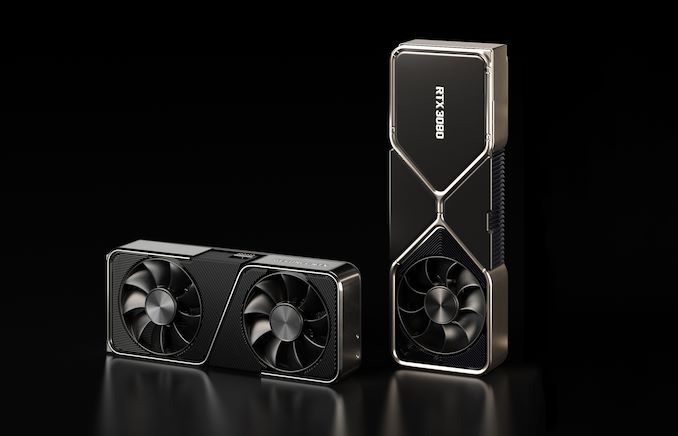

 Quote
Quote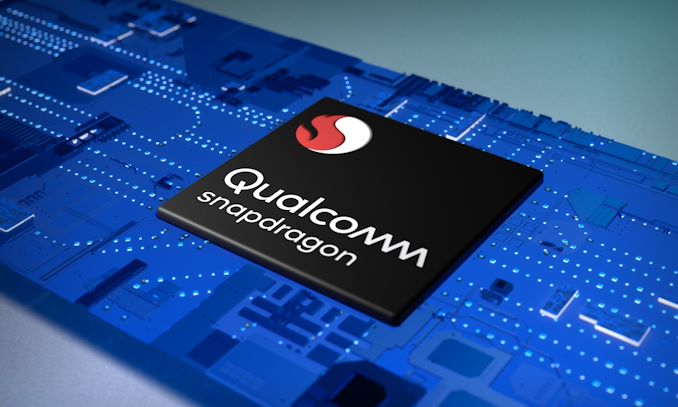
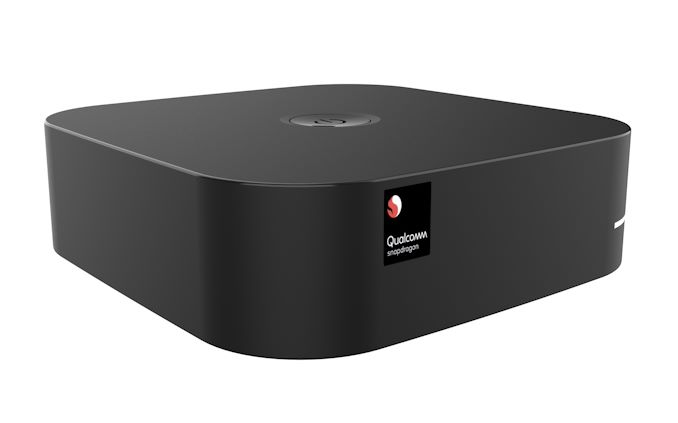
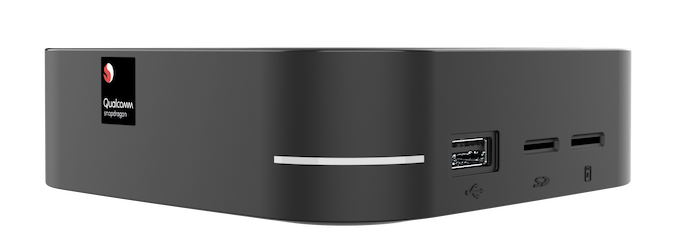

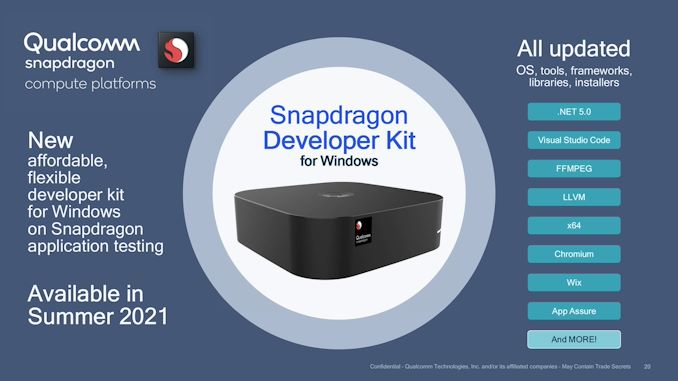
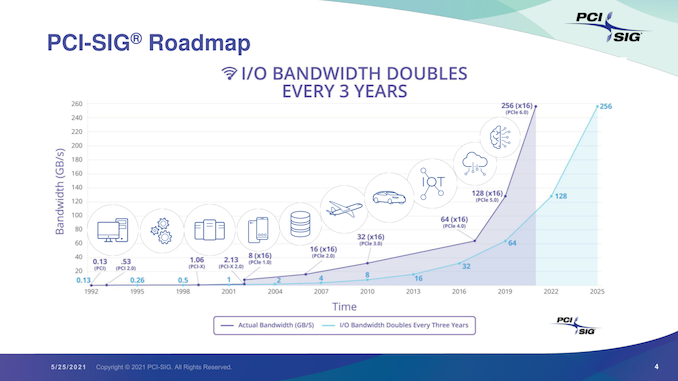
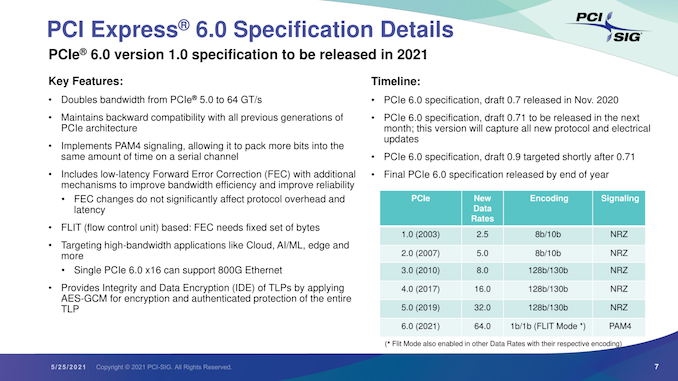


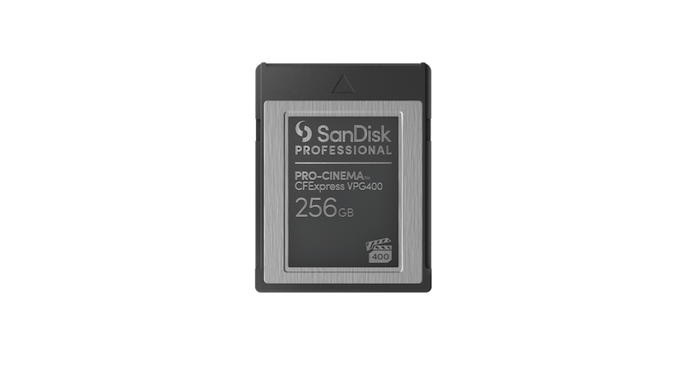
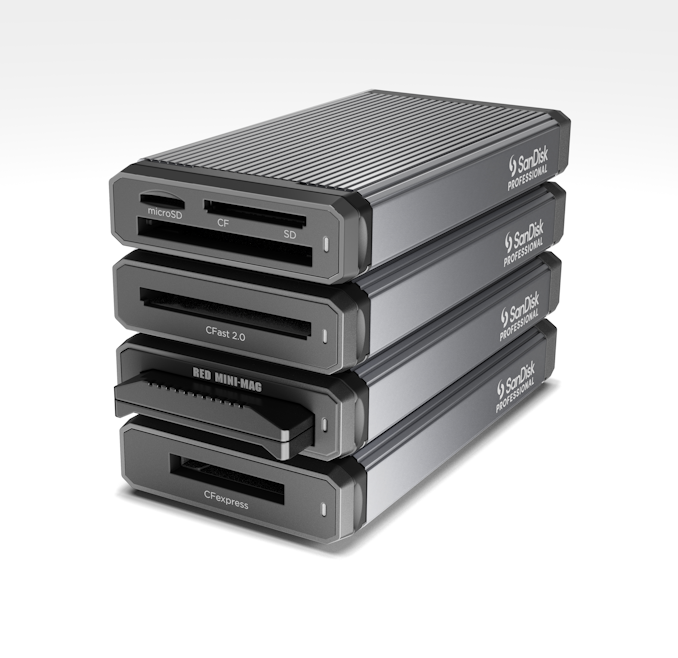

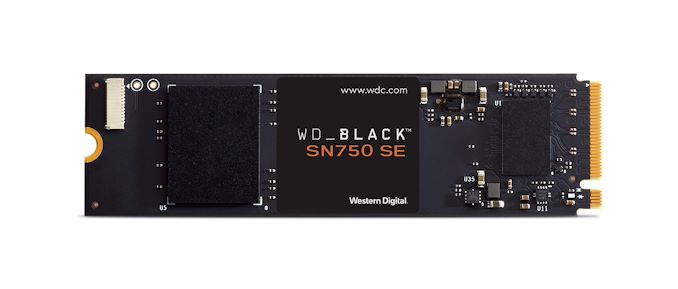
















Bookmarks